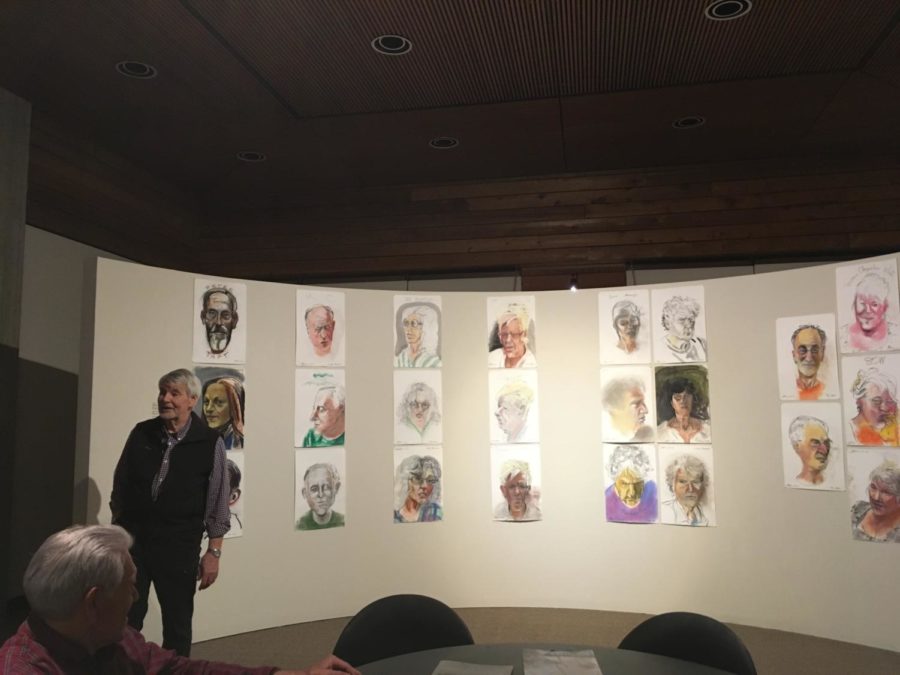Joe Patrick depicts life, Mexico, and impermanence through portraits
April 10, 2017
Last Wednesday, Joe Patrick led an audience of family, friends, and former students through the Brunnier Art Museum on a gallery tour of his exhibit “Parallels: The Art of Impermanence”
Patrick’s works consisted of both portraits and scenes from Oaxaca, Mexico, where Patrick and his wife spend six months out of their year. He painted portraits of his friends from Iowa and his friends from Oaxaca, and each subject had their own unique story and personality.
One painting of Patrick’s friend Dan was painted just a few days after Dan’s wife had died. Patrick described the painting as having a “mournful quality” about it, but believed it was also part of his friend’s nature. A similar experience occurred in another work of Patrick’s, where a friend died only a few months after getting his portrait painted.
“I painted him in March, and by October, he was dead,” Patrick said. “I had no idea that was gonna happen.”
Patrick described the inspiration for the name of the exhibit, connecting the dots between the temporary lives of the people in his portraits and the temporary structures of the Mexican architecture.
“Everything’s dying, disappearing…. everything’s impermanent,” Patrick said.
Patrick used to paint larger scenic paintings, but eventually switched to smaller, more portable sizes of canvas. Each size had a feature that Patrick preferred. The small paintings allowed for a more focused image, while the larger paintings created scenes you could “walk right into,” Patrick said.
Patrick used to paint people in his portraits, but gave one simple reason for why he no longer does.
“I got sick of it,” Patrick said.
He described the impermanence within his own art classes at the University of Iowa. Often, he would use no syllabus because he wanted the classroom experience to form around what his students drew.
“The pleasure of teaching is always coming up with something extemporaneous,” Patrick said.
An audience members asked how he drew his portraits.
“I don’t draw from imagination. I draw from perception,” Patrick said.
Patrick’s portraits weren’t exact replications of the appearance of the people, but instead the lines and shadows were used to emphasize different aspects of the subjects.
“It’s more fun for me than for them to look at,” Patrick said. “Somehow I have to get outside myself and into that person.”
Patrick also led a drawing workshop Thursday, April 6 for Iowa State students and Ames community members.







